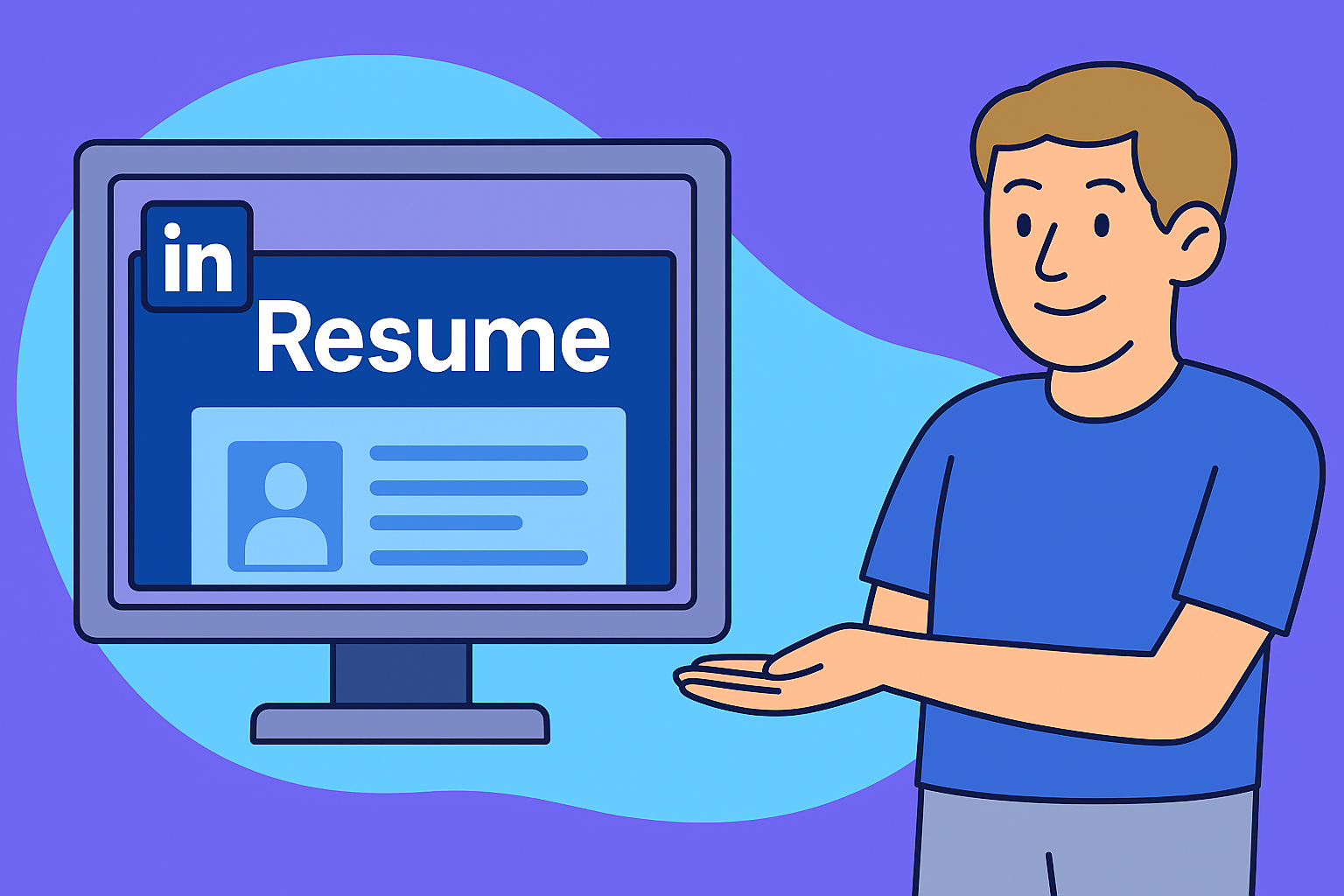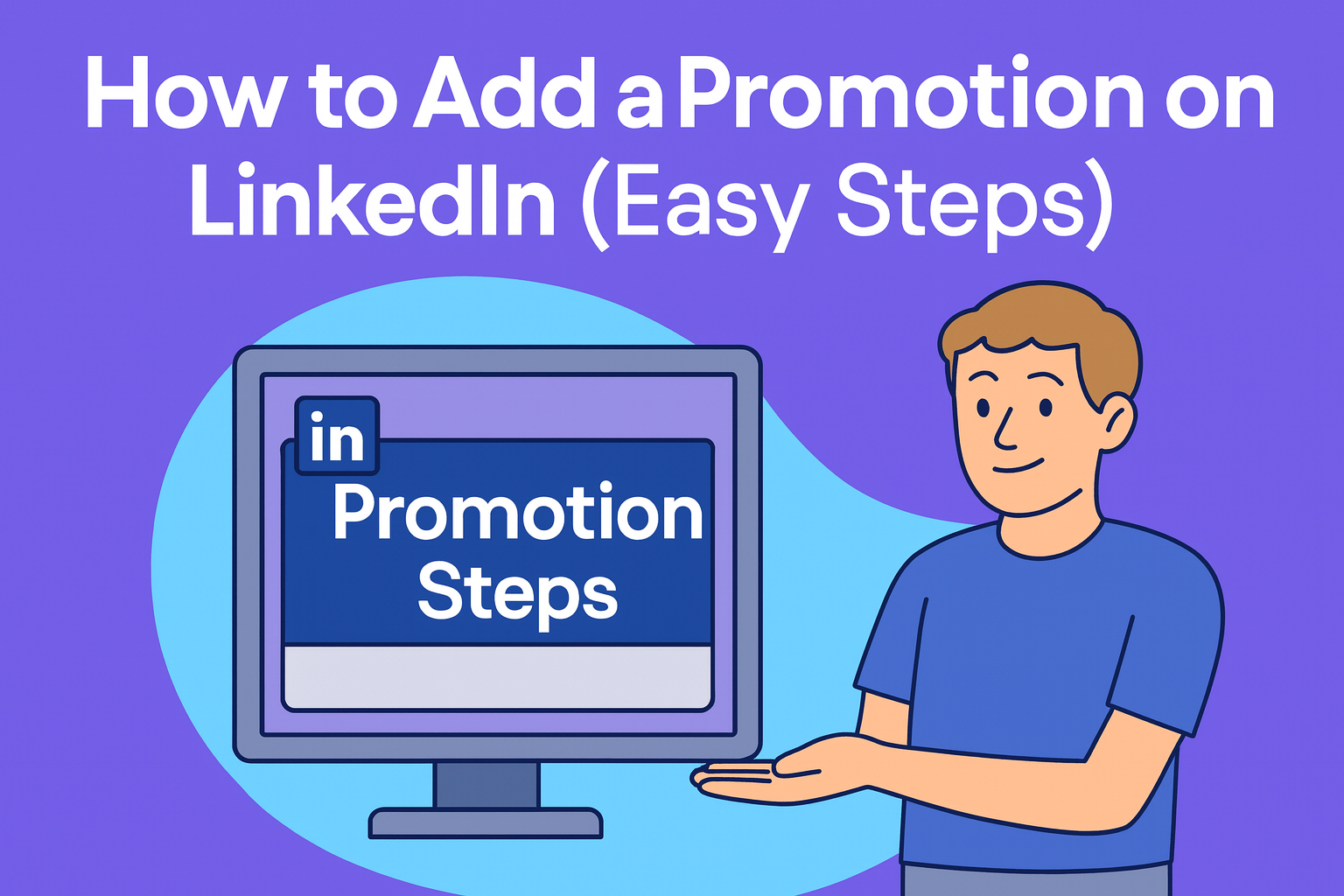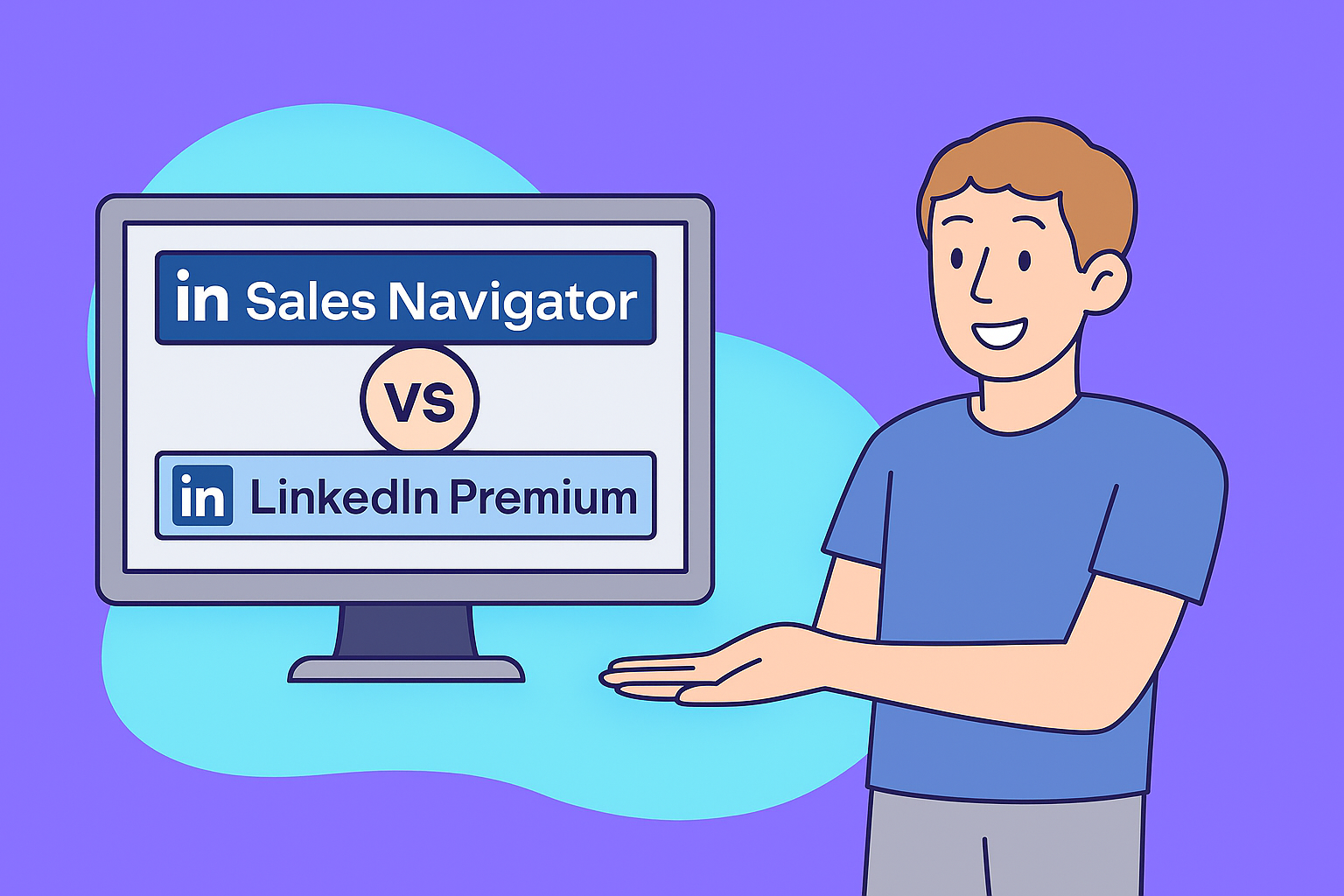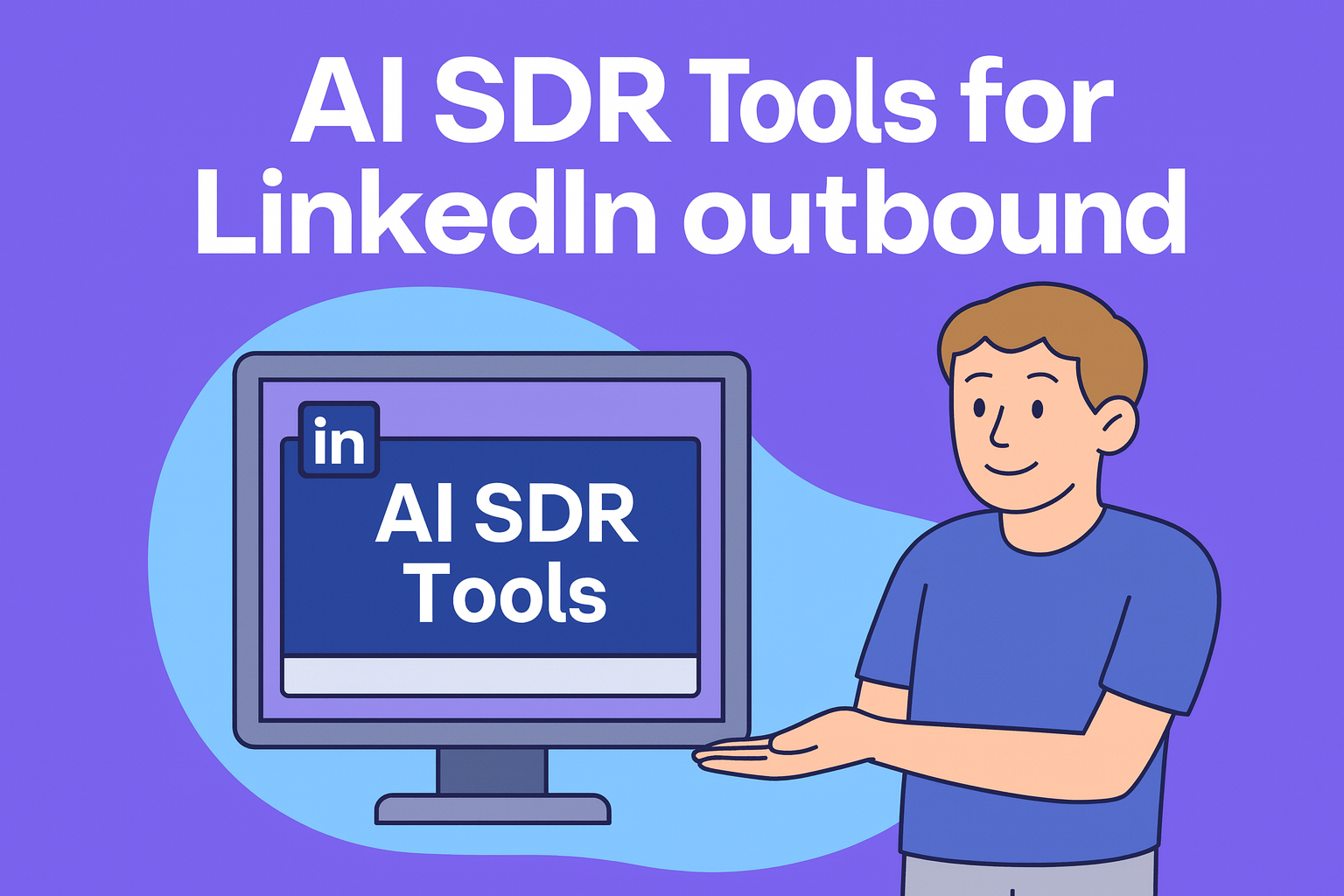B2B Demand Generation Guide: Strategy, Process, Tactics & Examples
- Table of contents
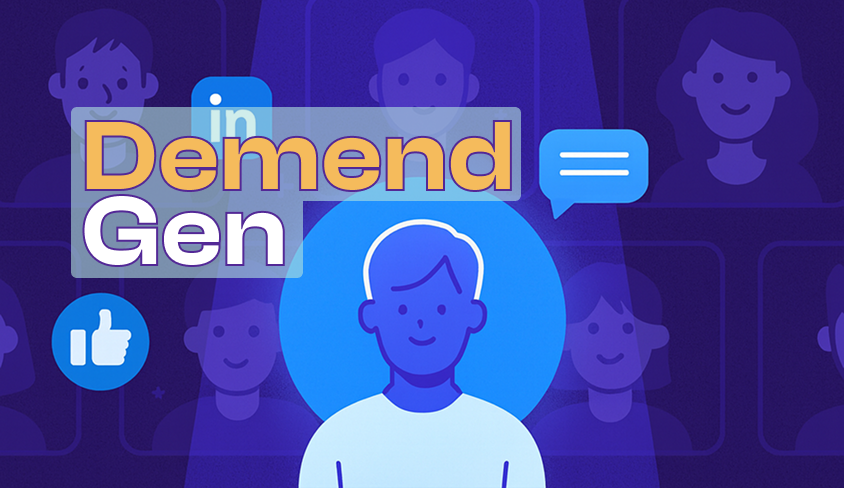
November 06, 2025
| |21 min read
| |TL;DR
B2B demand generation is the strategic marketing process of creating awareness, educating buyers, capturing intent, and converting interest into qualified pipeline and revenue. Modern demand generation marketing focuses on long-term audience building, ungated educational content, buyer-led journeys, and high-intent conversions. A strong B2B demand gen strategy combines content, channels, conversion optimization, attribution insights, and continuous measurement to warm target accounts, shorten sales cycles, and increase win rates.
What Is B2B Demand Generation? (Demand Generation Definition)
B2B demand generation is the strategic marketing process of creating awareness, educating potential buyers, nurturing interest, and building trust across every stage of the customer journey. The goal is to warm future customers, attract high-intent prospects, and translate qualified engagement into pipeline and revenue.
Unlike short-term lead generation, demand generation focuses on teaching the market why a problem matters, how to solve it, and why your solution category exists—long before someone is ready to buy.
B2B demand generation is the process of educating and attracting potential buyers, building trust, and capturing interest throughout the buying journey to create qualified pipeline and revenue.
❞
Demand Generation Meaning (Plain-Language Answer)
Put simply, demand generation means:
- Generating interest in a problem + solution category — not just your product.
- Building trust before a buyer actively enters the market.
- Creating long-term brand affinity through helpful, ungated education.
- Compounding pipeline over time as more buyers become aware of the problem you solve.
Demand generation isn’t a one-shot campaign. It’s a proactive, continuous effort to show up in the right channels with helpful content before a buyer realizes they need you.
B2B Most buyers are not ready to buy today.
Demand generation warms the 95% who aren’t in-market yet—so when they are, they think of you first.
(Source)
❞
Demand Generation vs Lead Generation (DG vs LG)
When marketers talk about “demand gen vs lead gen,” they’re describing two distinctly different approaches to acquiring customers. While lead generation focuses on capturing contact information as quickly as possible, demand generation focuses on educating the market, building trust, and creating long-term preference for your product category.
In other words:
- Lead generation extracts value today.
- Demand generation creates value that compounds over time.
Both matter — but they serve different purposes in the buying journey.
Demand Generation Focus
Demand generation prioritizes the market’s readiness to buy by educating and warming future buyers:
- Broad audience education
Your content teaches the market what problems exist and why they’re worth solving. - Brand affinity
Buyers prefer vendors they recognize and trust before entering the evaluation stage. - Ungated content
Frictionless access allows your expertise to scale across platforms. - Compounding value
Helpful content continues attracting demand long after it’s published. - Revenue focus
The key metric is pipeline sourced and revenue won — not the number of form fills.
Demand gen plays the long game, warming the 95% of buyers who aren’t actively shopping.
Lead Generation Focus
Lead generation aims to capture contact information from buyers who are ready — or close to ready — to speak with sales:
- Form fills
Gated assets or demo requests collect email addresses quickly. - Short-term tactics
Campaigns push buyers into the funnel immediately. - Volume over quality
More contact info doesn’t always equal more revenue. - Gated assets
Ebooks, reports, and whitepapers require data in exchange for access. - Linear funnels
The buyer moves through predefined steps to qualify and convert.
Lead gen is transactional and useful — but only represents the 5% of in-market buyers.
DG vs LG Comparison Table
| Factor | Demand Generation | Lead Generation |
|---|---|---|
| Focus | Education + affinity | Contact capture |
| Funnel | Non-linear | Linear |
| Content | Ungated | Gated |
| Attribution | Hybrid + dark funnel | Direct |
| Quality | High | Variable |
Quick Takeaway
Brands that invest in demand generation create a larger pool of future buyers, then use lead generation to capture them when they enter the market.
Why B2B Demand Generation Matters Today
B2B buying behavior has changed dramatically. Modern buyers prefer to research independently, learn from peers, and evaluate solutions on their terms — often long before they ever speak to a salesperson. Traditional outbound tactics alone are no longer enough to educate, influence, and convert today’s digital-first audiences.
Demand generation helps brands show up early, build trust, and nurture buyers throughout a non-linear, self-guided journey. When done correctly, it creates awareness in the 95% of your market who are not ready to buy yet, while positioning your brand as the obvious choice when they eventually enter the evaluation stage.
Buyer Behavior Trends
Modern B2B buyers:
- Self-service research
They consume content, watch demos, compare vendors, and explore pricing pages independently before talking to sales. - Dark social
Influence happens in private Slack groups, WhatsApp chats, Discord communities, LinkedIn comments, and DMs — where attribution tools can’t see it. - Peer recommendations
Trust is shifting away from vendor websites and toward real users, category experts, and buyer communities. - Community trust
Buyers prioritize advice from peers who have already solved the problem they’re facing.
Demand gen puts your brand inside these conversations — not waiting at the end of a form.
Problems Demand Gen Solves
A strong demand generation strategy helps fix several expensive growth challenges:
- Low win rates
Buyers feel more confident choosing brands they already trust and recognize. - Long cycles
Education and problem awareness happen earlier, shortening the sales process. - Missed intent
Without demand gen, high-intent buyers discover competitors first. - Poor inbound traction
If people aren’t searching for you, educating them creates the category awareness that eventually drives inbound demand.
Demand gen turns unknown future buyers into educated future pipeline.
Related: Best AI SDR Tools
How Demand Generation Works (Demand Gen Process)
Demand generation works by guiding buyers through three core stages of the modern B2B buying journey: creating awareness, capturing active intent, and converting that intent into pipeline. Each stage influences different buyer behaviors and requires a unique mix of channels, content, and messaging. When combined, they warm future buyers, surface in-market demand, and accelerate revenue generation.
At a high level, demand gen is less about forcing a linear funnel and more about showing up where buyers learn — not just where they buy.

1. Create Demand (Awareness)
This stage focuses on educating future buyers who don’t yet know they have a problem or aren’t actively looking for a solution. The goal is to build trust early by offering value without expecting anything in return.
Common plays include:
- Social channels
In-feed content on platforms like LinkedIn, YouTube, and X helps buyers discover new ideas, pain points, and category stories. - Podcasts
Long-form, conversational content drives thought leadership, showcases expertise, and reaches audiences beyond traditional search. - Value-driven content
Ungated guides, deep dives, frameworks, and opinions build familiarity and credibility while removing friction.
This stage warms the 95% of buyers not currently in-market, so when their need emerges, your brand feels familiar and credible.
2. Capture Demand (High-Intent Buyers)
Once a buyer becomes problem-aware and solution-curious, they begin searching for vendors. Demand capture ensures you’re present in the channels buyers use when they’re ready to evaluate options.
Key channels include:
- Google Search
High-intent keywords such as “best [category] tools” and “top [solution] platforms” reveal buyers actively looking for help. - Review marketplaces
Sites like G2, Gartner Peer Insights, and Capterra are trusted sources where buyers compare vendors based on social proof. - Demo pages
Optimized landing pages help buyers quickly see features, outcomes, pricing signals, and use cases.
At this stage, the job is not to convince buyers of the problem — it’s to be discoverable at the moment intent peaks.
3. Convert Demand (Pipeline)
Finally, once intent is captured, buyers need frictionless paths to conversion. This stage is about supporting sales conversations and accelerating decision-making.
Effective approaches include:
- Offers
Structured CTAs like “Request a Demo,” “Talk to Sales,” or “See Pricing” create clear next steps. - Fast follow-ups
Response speed is one of the strongest predictors of win rates; slow replies push buyers to competitors. - Sales enablement
Case studies, comparison sheets, ROI calculators, and objection-handling guides help buyers justify decisions internally.
This stage turns interest into opportunity, then opportunity into revenue.
Quick Takeaway
Demand generation is not just about getting leads — it’s about educating the market early, being visible when buyers search, and removing friction when they’re ready to buy.
Demand Waterfall / Funnel Stages (Modern B2B)
The modern B2B demand waterfall reflects how real buyers behave today: anonymous, self-educated, non-linear, and heavily influenced by communities and peers. Instead of pushing prospects through rigid qualification gates, this model focuses on surfacing intent signals across the entire journey and supporting buyers as they progress toward evaluation and purchase.
In practice, most of the journey happens before a prospect ever fills out a form or talks to sales — which is why demand generation strategies focus so heavily on early-stage visibility and education.
Funnel Breakdown
Below is a simplified view of the modern B2B demand waterfall:
- Anonymous research
Buyers begin by quietly exploring problems, symptoms, and category conversations. Most of this happens in search engines, social feeds, communities, and private channels. - Problem awareness
Buyers identify and validate a challenge worth solving. At this point, educational content, frameworks, and POVs shape how they think about the problem. - Solution awareness
Buyers explore approaches, categories, and methodologies — not vendors. Category-led content performs best here. - Vendor comparison
Buyers begin comparing features, outcomes, customer stories, pricing signals, and competitive differentiation. - Intent signal
Actions like visiting your pricing page, requesting a demo, or comparing reviews indicate readiness to evaluate vendors. - SQL → Revenue
Sales-qualified opportunities enter the pipeline, progress based on urgency and fit, and (ideally) convert to closed-won revenue.
> Modern takeaway: most of this journey happens before a sales team is involved, which is why demand gen matters.
Metrics by Stage
You can measure each step of the waterfall using behavioral, fit, and conversion-based indicators:
- Views
Top-of-funnel content consumption across blogs, social, videos, and podcasts. - Engagement
Scroll depth, repeat visits, comment threads, saves, shares, and community interaction. - ICP fit
How closely the prospect matches your ideal customer profile: industry, size, geography, technology stack, use case. - Demo requests
One of the strongest purchase intent signals; indicates active vendor evaluation. - SQL win rate
The ultimate commercial validation of demand quality — how effectively opportunities convert into revenue.
Quick Insight
The fewer buyers you educate at the top, the fewer will convert at the bottom. Demand gen expands the entire waterfall, not just one stage.
Core Components of a B2B Demand Generation Strategy
A successful B2B demand generation strategy blends positioning, audience understanding, compelling content, channel distribution, and conversion efficiency. When these elements work together, they create market awareness, surface intent signals, and accelerate revenue. Below are the foundational components every demand gen program needs.
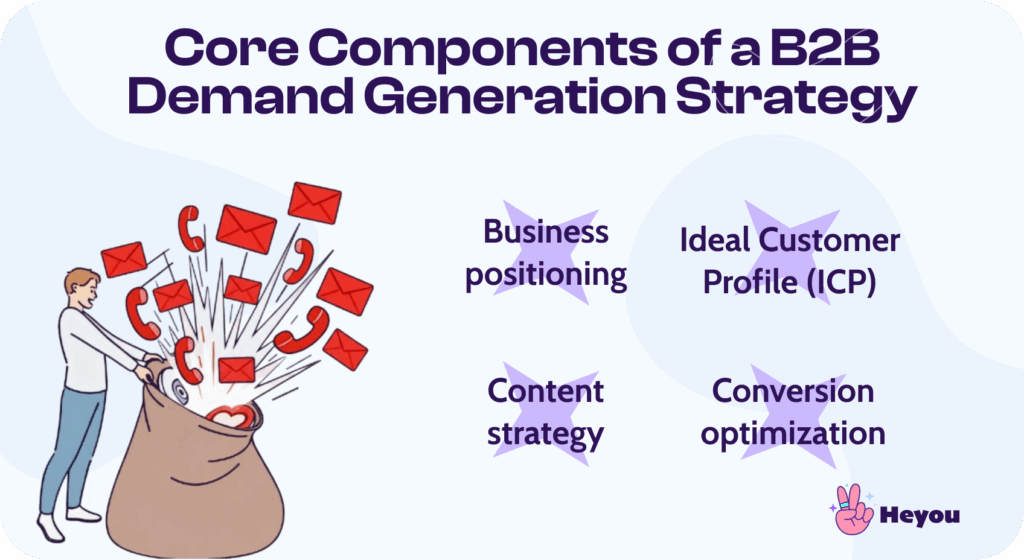
1. Business Positioning
Effective demand generation starts with clear positioning — the story you tell about who you help, the problems you solve, and why you’re different. Strong positioning gives your content a lens, clarifies your value, and makes your message memorable.
Key elements include:
- Your point of view (POV)
A recognizable perspective that shapes how your buyers should think about their problem. - Your story
A narrative that connects industry change, buyer pain, and your solution category. - Your messaging
Simple, consistent language that reinforces your differentiation across every channel.
Positioning isn’t just branding — it influences how buyers evaluate your category long before they evaluate your product.
2. Ideal Customer Profile (ICP)
Demand generation works best when targeted at the right buyers. Your ICP outlines the attributes of accounts most likely to succeed with your product.
Consider:
- Industry
Vertical focus reveals who feels the pain most acutely. - Trigger events
Hiring patterns, funding rounds, new leadership, or compliance changes that increase urgency. - Buying committees
In B2B, multiple stakeholders influence the purchase. Identify economic buyers, champions, blockers, and technical evaluators.
A well-defined ICP reduces waste, improves conversion rates, and increases pipeline efficiency.
3. Content Strategy
A modern demand gen content strategy prioritizes education over promotion. Buyers respond to helpful guidance long before they care about features.
Core principles:
- Education > promotion
Teach buyers how to diagnose problems, benchmark maturity, and compare approaches. - Buyer-led messaging
Speak to challenges and outcomes, not just product benefits. - Trust-building assets
POVs, frameworks, case studies, and community contributions build familiarity and authority.
Content is the engine that generates awareness, shapes consideration, and influences decisions.
4. Channel Strategy
Great content only matters if it’s distributed where buyers actually spend time. Channel strategy determines how effectively your message reaches the market.
Ask:
- Where do your buyers learn?
- Where do they ask questions?
- Where do they consume opinions?
Examples:
- LinkedIn in-feed content for practitioners
- YouTube for long-form education
- Review sites for comparison
- Podcasts for thought leadership
- Communities (Slack, Discord, Reddit) for peer validation
Distribution is 80% of demand gen success.
5. Conversion Optimization
Once buyers show intent, your job is to remove friction. Conversion optimization enhances the buyer experience by making it easier to evaluate and take action.
Focus areas:
- Website UX
Clear navigation, concise copy, social proof, and pricing signals. - CTAs (Calls-to-Action)
“Talk to Sales,” “Request a Demo,” or “Watch a Walkthrough” must be visible and relevant. - Page speed
Slow load times kill conversion. Speed is both a UX and SEO signal.
Conversion optimization turns attention into action, and action into pipeline.
B2B Demand Generation Tactics (Inbound + Outbound)
Modern B2B demand generation combines inbound education, outbound outreach, strategic content, and account-based personalization. The most effective programs blend these motions to drive awareness, surface intent, and convert high-fit accounts into revenue. Below are the core tactical categories driving results today.
Inbound Demand Generation Tactics
Inbound tactics attract buyers organically by educating them long before they enter a formal evaluation cycle. The goal is to build trust at scale, remove friction, and show up where buyers already learn.
Common inbound plays include:
- Blogs
Search-optimized educational articles help buyers learn about problems, solutions, and category frameworks. - In-feed LinkedIn content
Short-form insights, commentary, visual breakdowns, and POV posts spark awareness and social proof. - Interview podcasts
Conversational content builds authority, exposes category trends, and reaches audiences outside search. - YouTube explainers
Video tutorials and thought leadership provide deep answers to high-intent questions.
Inbound demand generation creates a compounding effect — the more educational content you publish, the more future buyers you warm.
Outbound Demand Gen Tactics
Outbound tactics proactively introduce your message to targeted accounts, especially when intent signals are present.
Common approaches:
- Cold email
Personalized outreach that speaks to pain points, trigger events, or competitive gaps. - Direct mail
High-impact physical packages used to break through digital noise and create memorable brand moments. - Intent-based outreach
Engagement triggered by signals like review site visits, pricing page hits, or competitor comparisons.
Modern outbound focuses on relevance, not volume — thoughtful context produces far higher reply and meeting rates.
Related: Automating LinkedIn Messages
Content Marketing
Content marketing fuels almost every stage of demand generation by informing, educating, and influencing buyer behavior. In B2B, buyers reward brands who teach them something valuable.
Effective content formats include:
- Whitepapers
Deep research and frameworks that shape category understanding. - Webinars
Live or on-demand sessions that tackle objections, showcase results, and drive audience interaction. - Deep-dive guides
Long-form, practical explanations addressing how to diagnose, evaluate, and solve specific problems.
The rule: the more insightful your content, the more future demand you create.
ABM (Account-Based Marketing)
Account-based marketing drives hyper-targeted demand by focusing on high-fit accounts rather than broad audiences. Instead of casting a wide net, ABM aligns marketing and sales around specific buyer groups.
Core benefits:
- Higher relevance → higher response rates
- Personalized journeys for each segment
- Focused spend on high-value opportunities
ABM works best when combined with:
- Intent data
- Personalized messaging
- Channel orchestration
- Sales alignment
It’s not about reaching more accounts — it’s about reaching the right ones.
Quick Takeaway
Successful demand generation blends inbound trust, outbound precision, content education, and targeted ABM engagement to warm buyers, surface intent, and accelerate pipeline.
Best Demand Generation Strategies for B2B (Top 2025 Picks)
As B2B buying behavior evolves, the most successful demand generation strategies focus on visibility, trust, and influence across every part of the buyer journey. In 2025, the brands winning inbound pipeline aren’t just optimizing forms — they’re shaping how the market thinks about problems, outcomes, and categories.
Below are the most effective strategies modern teams are deploying.
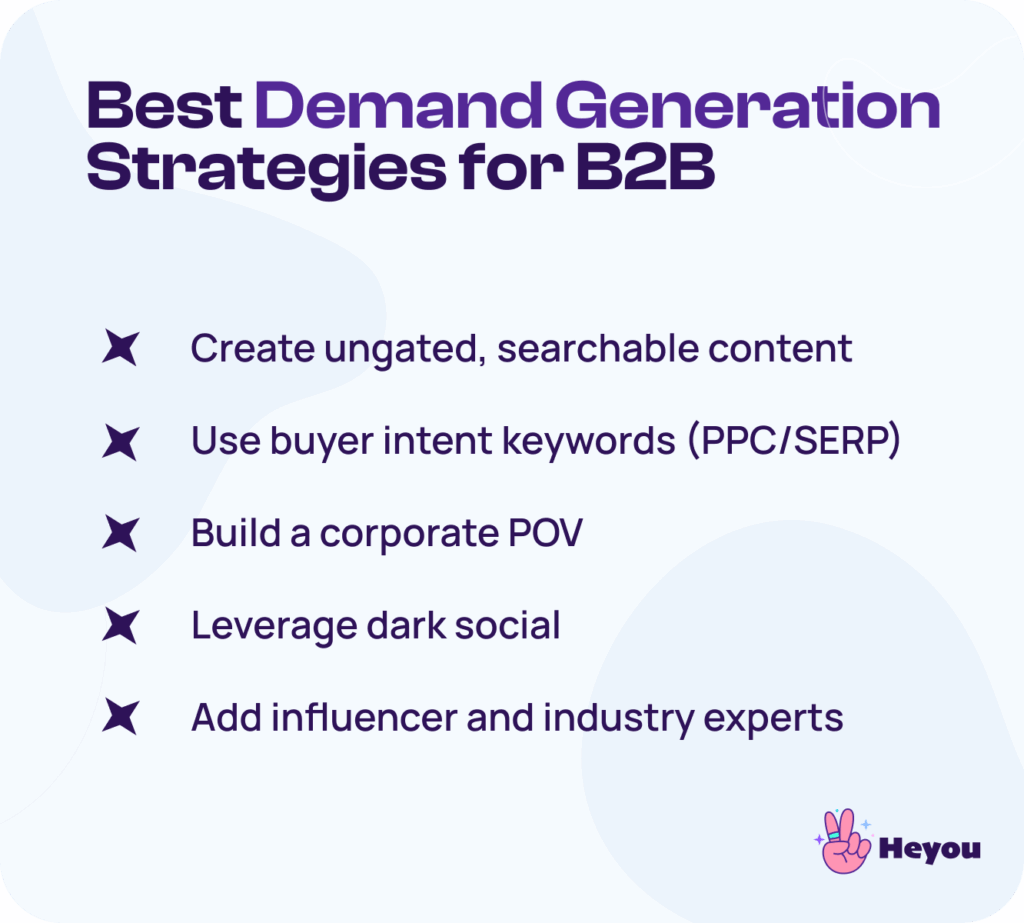
1. Create Ungated, Searchable Content
Buyers prefer to research quietly, on their own terms. Ungated content removes friction and increases reach, especially during the early and middle stages of the journey.
Why it works:
- Shows expertise before a buyer enters the funnel
- Helps shape category thinking
- Surfaces on search, social, communities, and YouTube
Examples include:
- Frameworks
- Deep guides
- Comparison breakdowns
- How-to tutorials
Ungated content compounds — once published, it continues to warm future buyers without additional spend.
2. Use Buyer Intent Keywords (PPC/SERP)
Once buyers become solution-aware, they turn to search engines with intent-rich queries. Targeting these keywords helps you show up exactly when demand peaks.
Examples:
- “Best [category] platforms”
- “[Competitor] alternatives”
- “Top [industry] solutions”
Paid search (PPC) + SEO on these terms:
- Captures buyers in evaluation mode
- Shortens sales cycles
- Improves demo conversion rates
You’re not creating demand — you’re catching it at the moment of intent.
3. Build a Corporate POV
A corporate point of view differentiates you in a crowded market. Instead of saying what everyone else says, a POV frames:
- Why the market is changing
- What buyers should do about it
- What’s wrong with traditional approaches
POVs help you:
- Stand out in social feeds
- Drive category conversation
- Turn your messaging into memorable, repeatable language
Thought leadership is no longer optional — category creators win demand.
4. Leverage Dark Social
Most buyer influence cannot be tracked by attribution tools. It happens in:
- Slack groups
- WhatsApp threads
- Private communities
- LinkedIn comments and DMs
- Discord channels
- Peer-review calls
This is called dark social — highly influential, highly invisible.
Winning in dark social requires:
- Shareable insights
- POV soundbites
- Community participation
- Turning employees into micro-creators
Communities > ads, because peer-to-peer trust converts faster than brand messaging.
5. Add Influencers + Industry Experts
Social proof is fragmented. Instead of one big voice, niche practitioners shape most buyer opinions.
Benefits include:
- Borrowed trust
- Category relevance
- Faster audience penetration
Examples:
- Guest webinars
- Roundtable discussions
- Analyst co-content
- Practitioner explainers
When someone buyers already trust endorses your POV, resistance drops — fast.
Quick Takeaway
The demand gen strategies winning in 2025:
- Remove friction
- Meet buyers where they learn
- Borrow trust from credible voices
- Capitalize on high-intent search
- Influence conversations you don’t own
B2B Demand Generation Channels
Demand generation succeeds when brands show up across multiple channels where buyers learn, research, and evaluate solutions. The most effective programs combine paid reach, owned audience building, and earned authority to influence both the 95% of buyers not yet in-market and the 5% actively evaluating vendors.
Below are the core channel categories fueling modern B2B demand.
Paid Channels
Paid channels expand reach quickly, accelerate visibility, and help you capture active buying intent. With the right targeting, these channels surface buyers already researching your category.
Common paid demand channels include:
- Google Ads
High-intent search campaigns that appear the moment buyers express interest, compare vendors, or research alternatives. - Paid social
In-feed ads on platforms like LinkedIn, Meta, or YouTube that deliver educational content, case studies, and POV messaging to your ICP. - Retargeting
Follow-up ads that re-engage visitors who viewed pricing pages, case studies, comparison content, or product pages — turning curiosity into conversion.
Paid demand channels work best when paired with strong content and a clear point of view.
Owned Channels
Owned channels are platforms you control — no algorithm risk and no pay-to-reach. They nurture long-term brand affinity and compound over time.
Examples include:
- Blog
Evergreen content that ranks in search, shapes category thinking, and warms future buyers. - Newsletter
Regular touchpoints that deepen trust, share insights, and keep your brand top-of-mind. - YouTube
Explainers, tutorials, demos, and thought leadership that answer buyer questions at every stage of the journey.
Owned channels are the backbone of durable demand — you build them once, and they continue delivering value.
Earned Channels
Earned channels amplify your message through external validation. Instead of marketing your own expertise, others promote it — increasing credibility and reach.
Examples:
- PR
Press coverage signals momentum, credibility, and authority at the executive level. - Guest features
Contributed articles, LinkedIn collaborations, community spotlights, or analyst co-content expose your brand to net-new audiences. - Podcasts
Appearances let you inject POV into existing listener communities, leaning into trust audiences already have.
Earned channels are powerful because buyers trust peers and experts more than vendors.
Quick Takeaway
The strongest demand gen programs blend:
- Paid reach to capture intent,
- Owned audience to compound trust, and
- Earned influence to borrow credibility.
Demand Generation Metrics (Measurement & KPIs)
Measuring demand generation success requires tracking both commercial outcomes and the leading indicators that show whether your market education efforts are working. Unlike traditional lead gen, demand gen emphasizes revenue-impacting signals rather than form-fill vanity metrics.
The best measurement systems blend attribution models, customer behavior signals, and funnel efficiency to reveal whether you’re creating future pipeline — not just capturing contact information.
Commercial Success Metrics
These KPIs measure the direct impact of demand generation on revenue and sales efficiency. They’re the strongest indicators of program health:
- Pipeline sourced
The total value of qualified opportunities influenced or originated by demand generation efforts. A core leading indicator of future revenue. - Marketing-qualified opportunities (MQOs)
High-intent prospects who have progressed beyond basic interest and are now actively evaluating fit. - Closed-won revenue
The ultimate validation of demand quality — not just quantity. - Win rate
Measures how effectively your sales team converts opportunities. Higher win rates often correlate with strong buyer education and problem awareness.
Commercial metrics help answer: Is demand generation driving revenue, not just leads?
Attribution & Insights
Attribution helps you understand where demand originates and how buyers discover you. Because much of modern influence happens invisibly, insight requires multiple lenses:
- Self-reported attribution
A free-text field (e.g., “How did you hear about us?”) that captures dark social, communities, and word-of-mouth — data you can’t track otherwise. - Split funnel analysis
Compares performance between traditional lead gen (form fills) and high-intent conversions (demo/pricing page). Reveals which paths create higher win rates and faster cycles. - Dark funnel visibility
Influences in private channels (Slack groups, DMs, WhatsApp, Discord) that never appear in dashboards. Critical for understanding modern buying reality.
Attribution isn’t about perfect tracking — it’s about patterns of influence.
Other KPIs
Supportive metrics that reveal channel efficiency, retention value, and brand momentum:
- CPA (Cost Per Acquisition)
Measures how efficiently you convert prospects into paying customers. - CLV (Customer Lifetime Value)
Indicates long-term revenue potential and retention quality. - Account engagement
Tracks buying committee interactions across assets, events, and channels. - Direct brand traffic
Signals strong category awareness — buyers search you by name instead of the problem.
These metrics prove whether demand generation efforts compound over time.
KPI Overview Table
| Metric Type | KPI | Why It Matters |
|---|---|---|
| Commercial | Pipeline sourced | Leading indicator of future revenue |
| Commercial | Closed-won revenue | Final proof of demand quality |
| Efficiency | CPA | Measures cost-efficient growth |
| Brand Demand | Direct traffic | Shows category awareness & preference |
| Engagement | Account engagement | Reveals buyer readiness & influence |
Demand Capture: Optimizing High-Intent Buyers
Demand capture focuses on buyers who are already problem-aware, solution-curious, and actively researching vendors. At this stage, marketing isn’t creating demand — it’s intercepting it. The goal is to make sure your brand shows up at every point where intent becomes visible, and to provide a frictionless path toward evaluation.
Most B2B teams lose revenue here simply because they aren’t visible when buyer intent peaks.
Channels
Modern buyers signal intent in several key places:
- Search engines
Queries like “best [category] tools” or “top [industry] platforms” indicate active comparison. Ranking or bidding on these terms is critical. - Review sites
Platforms like G2, TrustRadius, and Capterra heavily influence vendor shortlist creation; buyers trust peer reviews more than marketing copy. - Competitor pages
Buyers often Google competitors directly; comparison pages and alternative landing pages can intercept this intent.
These channels represent the 5% of the market actively in-market, and they convert faster than any top-of-funnel source.
High-Intent Conversion Assets
Once buyers land on your website or marketplace listings, the right assets accelerate evaluation:
- Demo request
The strongest commercial intent signal. Optimizing this form, CTA placement, and routing dramatically affects pipeline quality. - Pricing pages
Buyers look for value framing, contract expectations, and buyer roles. High engagement here correlates strongly with revenue. - Case studies
Proof points, industry relevance, and quantified outcomes reduce perceived risk for buying committees.
When these assets are optimized, you reduce friction and increase pipeline velocity.
Demand Conversion: Sales Alignment
Capturing intent is only half the job — converting it requires tight coordination between marketing and sales. Demand conversion focuses on speed, routing efficiency, and how buyers are managed once they raise their hand.
Misalignment here is one of the most expensive leaks in the revenue engine.
Speed Wins
Response time is one of the strongest predictors of conversion. Studies consistently show:
- Vendors who respond within minutes close more deals
- Slow follow-ups push prospects toward faster competitors
- Buyers interpret slow responses as poor support culture
In B2B, buyers don’t simply choose the best vendor — they choose the first responsive vendor.
Separating High-Intent Buyers
Not all hand-raisers are equal; routing logic should reflect:
- ICP fit (industry, size, tech stack)
- Trigger event urgency
- Buying committee role
- Engagement signals
High-intent buyers should be:
- Fast-tracked to sales
- Given a clear next step
- Assigned tailored enablement assets (ROI calculators, comparison sheets, battlecards)
Lower-intent buyers can be nurtured asynchronously through email, remarketing, and content.
Routing everyone the same way is a costly mistake — separation increases win rate and shortens cycles.
How to Build a Demand Generation Program (Step-by-Step)
Launching a demand generation program requires coordination between marketing, sales, and leadership. The goal is to create market awareness, capture intent signals, and convert opportunities into revenue — with repeatable processes. Below is a practical step-by-step framework used by modern B2B teams.
Step 1: Define ICP, Message, Goals
Start by clarifying who you’re targeting and why.
- Identify industries, company sizes, tech stacks, geos
- Build messaging around pain points and outcomes
- Set commercial goals tied to pipeline and revenue
Alignment early prevents wasted spend and misrouted opportunities.
Step 2: Research Buyer Channels
Next, figure out where your buyers actually consume information.
Ask:
- Where do they learn?
- Who do they trust?
- Which communities matter?
Examples:
- LinkedIn feeds
- Analyst blogs
- Slack communities
- Review platforms
- YouTube explainers
- Podcasts
Channel intelligence informs distribution — not just creation.
Step 3: Categorize Topics
Your content roadmap should address the entire buyer journey. Categorize content into:
- Business topics
Macro narratives: market shifts, risks of inaction, category frameworks. - Demand triggers
Events that push buyers into evaluation (funding, compliance changes, layoffs, leadership turnover). - Discovery signals
Keywords and discussions that reveal intent, confusion, or comparison needs.
Topic clustering ensures your content educates the 95% not ready to buy yet.
Step 4: Prioritize DG Campaigns
Not all campaigns are equal. Prioritize based on:
- Revenue potential
- Time-to-impact
- Channel reach
- Conversion efficiency
- ICP relevance
Focus on high-upside experiments first, then scale what works.
Step 5: Reduce Friction
Buying should feel simple. Reduce friction across:
- CTA clarity
- Demo request forms
- Routing logic
- Calendar accessibility
- Pricing visibility
The shorter the path from curiosity → conversation, the more pipeline you’ll generate.
Step 6: Launch Pilot Programs
Start small. Test demand in controlled environments:
- Narrow ICP segment
- One primary channel
- One core narrative
This reduces noise, simplifies iteration, and speeds up learning loops.
Once a pilot proves successful, expand reach and add channels.
B2B Demand Generation Team Structure (Roles & Skills)
Successful demand generation teams combine strategic planning, creative execution, and operational alignment. While team size varies, the responsibilities remain consistent.
Core Qualities
Demand gen teams perform best when they exhibit:
- Leadership alignment
Marketing, product, and sales must share goals, definitions, and feedback loops. - Strategic thinking
Ability to translate market insights into narrative and channel strategy. - Delivery execution
Consistency in distribution, experimentation, and measurement cadence.
Without these qualities, even well-funded programs stall.
Ideal Roles
A high-performing demand gen function typically includes:
- Demand Gen Leader
Owns strategy, narrative, and revenue alignment. - Strategist
Researches trends, segments audiences, and guides channel prioritization. - Content Executive
Produces educational assets that shape category thinking and enable sales. - Subject Matter Expert (Bonus)
Provides credibility, technical depth, and practical perspective to content.
These roles can be internal, fractional, or hybrid — the capabilities matter more than the headcount.
“You’re not hiring content creators — you’re hiring demand creators.
Software & Tools for B2B Demand Generation
Modern demand generation relies on software to automate workflows, surface intent signals, and improve targeting accuracy. The following tool categories align with the demands of today’s non-linear buyer journey.
Marketing Automation
HubSpot, Marketo
These platforms streamline nurturing, scoring, email orchestration, and campaign measurement. Marketing automation supports:
- Behavioral segmentation
- Drip campaigns
- Lifecycle stage tracking
- Lead scoring
They help scale personalization without increasing manual workload.
Related:
Revenue AI (Dark Funnel)
6sense, Demandbase
Revenue AI platforms uncover hidden buying signals across anonymous visits, keyword surges, comparison traffic, and consumption patterns. They:
- Identify in-market accounts
- Reveal research intent
- Prioritize outreach targets
Perfect for intercepting demand before competitors do.
Messaging Effectiveness Testing
Wynter
Wynter analyses copy resonance by showing messaging to real ICP segments. It uncovers:
- Confusion points
- Value gaps
- Emotional friction
This reduces wasted spend on messaging that doesn’t convert.
ICP Data Accuracy
Cognism
High-quality contact + firmographic data ensures sales targets the right accounts. Cognism improves:
- Account fit
- Buyer committee mapping
- Territory prioritization
Better data = cleaner pipeline.
Remarketing + Personalization
Mutiny
Mutiny personalizes landing pages, copy, and CTAs based on visitor attributes. Teams use it to:
- Increase demo conversion
- Improve account-specific messaging
- Reduce bounce on pricing/content pages
Personalization accelerates trust and evaluation.
Examples of Demand Generation Programs (Use Cases)
Thought Leadership
Leadership-driven POV content shapes category conversations. It:
- Builds authority
- Influences dark social
- Educates early-stage buyers
Think deep posts, frameworks, and expert commentary.
Community-Led Growth
Slack groups, Discord communities, and niche forums outperform ads. Inside communities buyers:
- Ask peers for advice
- Share tools they trust
- Validate buying decisions
Community = credibility.
Education-First Webinar Series
Recurring webinars teach problems, frameworks, and market trends. Over time they:
- Shorten sales cycles
- Build repeat audiences
- Nurture existing pipeline
They work because they give before they ask.
Demand Creation vs Demand Capture (Critical Difference)
Demand gen has two distinct sides — smart teams invest in both.
Demand Creation
Focuses on increasing awareness of the problem + solution category. It targets the 95% of future buyers not ready today. Formats:
- POV posts
- Explainer videos
- Category frameworks
Demand Capture
Surfaces the 5% of buyers in-market right now. This is where:
- Pricing pages
- Review sites
- High-intent keywords
convert quickly.

Demand Generation in Digital Marketing (Modern View)
Buyer-Led Journey
Today’s buyers research in private channels and move independently. No forced funnels. Brands must adapt to:
- Late vendor involvement
- Self-education
- Peer validation
Attribution Reality
Influence increasingly happens in the dark funnel — places tools can’t track:
- Screenshots in Slack
- Podcast mentions
- Group chats
Self-reported attribution helps fill the gap.
Common Demand Generation Mistakes (Avoid)
Measuring Leads, Not Revenue
Leads ≠ pipeline. Marketing must optimize for:
- SQLs
- Win rate
- Deal velocity
Gating Everything
Gated content limits reach, sharing, and learning. Ungated compounding content scales trust.
No POV
Generic messaging blends into noise. A unique point of view creates category preference.
Product Marketing vs Demand Generation
Product Marketing
Focuses on:
- Positioning
- Segmentation
- PMM assets
- Feature messaging
It shapes what you say.
Demand Gen
Focuses on:
- Distribution
- Activation
- Channel orchestration
It ensures people actually hear it.
Both work best together.
Brand-to-Demand Marketing (Hybrid Approach)
Why It Works
Brand builds trust
Demand captures intent
Combined, conversion becomes inevitable.
Key Plays
- Short, educational videos
- Strong POV content
- Comparison frameworks
- Category stories
This bridges top-funnel influence with bottom-funnel revenue.
Outsourced Demand Generation Services
When to Consider
- No internal team
- Need speed
- Lack specialization
Outsourcing accelerates learning curves.
Evaluation Criteria
Choose vendors who demonstrate:
- ICP familiarity
- Attribution maturity
- Creative capability
Agencies must think like revenue teams, not content vendors.
Who Owns Demand Generation? (Role Clarity)
Ultimately, one leader must coordinate marketing, sales, and content.
Demand Gen Manager Responsibilities
- Campaign architecture
Determines frameworks and cadences. - Channel orchestration
Ensures multi-touch distribution. - Pipeline contribution
Tied directly to revenue impact.
This is not a vanity metric role.
Global Demand Generation (Scaling Internationally)
Expanding cross-region requires nuance.
Localization Considerations
- Market maturity
Some regions require educating the category. - Cultural messaging
Benefits vary by region. - Channel preference
LinkedIn in North America, WhatsApp in LATAM, WeChat in APAC.
Localization ≠ translation — it’s relevance.
Advanced Demand Generation Techniques (2025+)
The next era of demand gen pairs intent signals with personalized activation.
Persona-Layered Personalization
Customize messaging by:
- Role
- Maturity level
- Use case
Relevance increases reply rates dramatically.
Signal-Based Outreach
Trigger outreach when buyers:
- View pricing pages
- Compare alternatives
- Surge on category keywords
Signals > sequences.
AI-Powered Content
Generative AI enables:
- Faster content iteration
- Channel-specific formatting
- Real-time personalization
Teams ship more experiments with less friction.
FAQ
What does demand generation mean in marketing?
Demand generation is the marketing process of creating awareness, educating buyers, and nurturing interest across the entire customer journey to drive qualified pipeline and revenue. It focuses on market education, not just contact capture.
What is demand generation in B2B?
In B2B, demand generation warms future buyers by teaching them about problems, outcomes, and solution categories long before they’re ready to speak to sales. Examples include:
- Thought leadership content
- Product-agnostic education
- Category POV frameworks
- Case studies and success stories
The goal: create preference before a buying window opens.
What does a demand generation manager do?
A demand generation manager:
- Plans multi-channel campaigns
- Orchestrates channels (paid, social, email, SEO)
- Aligns with sales on pipeline creation
- Activates high-intent leads
- Measures revenue contribution
Their success is tied to pipeline, not leads.
How do you create a demand generation strategy?
Step-by-step:
- Define ICP, messaging, and commercial goals
- Identify buyer research channels
- Map topics to stages (problem → solution → vendor)
- Create ungated educational content
- Capture demand via intent keywords & review sites
- Optimize conversion paths (demo, pricing, case studies)
- Route high-intent buyers to sales fast
- Measure pipeline, win rate, and direct traffic
What are examples of demand generation?
Common demand gen channels and campaigns include:
- Ungated deep-dive content
- LinkedIn thought leadership
- Webinars and workshops
- Product explainers and tutorials
- Review site optimization
- Retargeting ads
- Community engagement
Everything centers on education and visibility.
What’s the difference between demand generation and lead generation?
Comparative bullets:
- Demand generation educates → lead gen captures
- Demand gen is ungated → lead gen is gated
- Demand gen shapes awareness → lead gen collects contacts
- Demand gen warms 95% future buyers → lead gen targets 5% in-market
- Demand gen drives revenue → lead gen drives form fills
Lead gen extracts value; demand gen creates it.
What are the best B2B demand gen tactics?
Top 2025 plays:
- Ungated, search-optimized content
- Category POV frameworks
- Buyer-intent keywords (PPC/SERP)
- Review marketplace optimization
- Thought leadership videos
- Community participation (Slack, Discord)
- Webinar series + live education
- Retargeting high-intent visitors
The winning theme: remove friction, add clarity.
How long does demand generation take to work?
Typically 3–9 months, depending on:
- Category competition
- Content velocity
- Brand maturity
- Channel consistency
Demand gen compounds — results accelerate over time.
Is demand generation inbound or outbound?
Both. Demand generation is a hybrid motion:
- Inbound warms future buyers (education, content, community)
- Outbound unlocks in-market demand with targeted outreach
The highest-performing teams blend both.
Can demand gen be outsourced?
Yes — with the right partner.
Pros:
- Faster execution
- Immediate expertise
- Reduced hiring friction
Cons:
- Limited domain depth
- Potential misalignment
- Requires tight feedback loops
Outsource specialization, retain strategy.
What is demand generation in sales?
In sales, demand generation:
- Surfaces high-intent accounts
- Reduces time spent on low-fit opportunities
- Shortens sales cycles via educated prospects
- Provides enablement assets (case studies, ROI calculators, comparison sheets)
Sales closes faster when marketing warms the buyer before the first call.
November 06, 2025
| |21 min read
| |Articles
Check our recent articles
Stop begging colleagues for posts likes.
Auto-like your corporate posts and boost your social performance.
